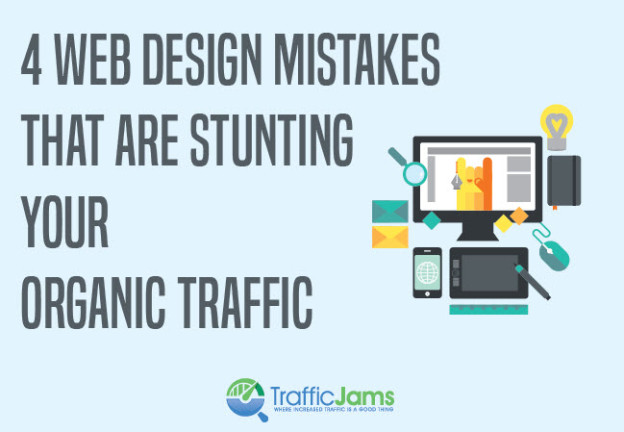Perfecting your digital marketing strategy isn’t just about social media and other off-page SEO factors. A lot of how your website ranks is how your website design is optimized for SEO. Although web design may just seem like an aesthetic factor of your brand, it actually has a lot to do with your site’s impressions and conversions. Here are some common web design mistakes that are made that lower your site’s traffic:
- It’s not mobile-friendly: You may think your visitors aren’t going to visit your website from their mobile device. Statistics actually show that 80% of people use their smartphone to search the Internet and 47% use their tablet. Making your site mobile-friendly is no longer just about making a more positive user experience, it is now ultimately required. As of April 21st, 2015, Google posted an algorithm update that requires your website to be optimized for mobile users. To check if your website is mobile-friendly, click here. There are plenty of reasons to optimize your website for mobile devices. Not only are mobile users far less likely to stay on your website if it’s not mobile friendly, but your website’s ranking takes a hit from Google for not being mobile-ready.
- You don’t have a sitemap: For your website to be displayed in search engine results, it must be indexed. Having a sitemap allows for search engines to index your website. A sitemap is simply an XML file that includes your websites’ individual URLs. Essentially, it archives every page on your site. With a sitemap, all of your sites URLs are centralized so that major search engines can easily crawl your websites, thus allowing them to show up in search results.
- No metadata: Metadata may not seem important, but it actually is a way for both major search engines and potential visitors to decide the quality of your site. It tells them what they should expect to see and whether or not it’s a good fit for them, before they even read your content.

- Meta Title Tags: Only the first 50-60 characters of your title tag will be displayed in search results. It’s safest to keep your title tags under 55 characters (with spaces). This is the first thing users see from your site when searching. If it’s eye-catching and true to your content, people will visit your site and therefore become potential conversions.
- Meta Description: In search engine results, this is the first description of your webpage that people see. It can make or break whether or not they want to visit your site. If your meta description is longer than 155-160 characters (with spaces), then it will get cut off in search results. With that being said, even though meta descriptions are often auto-populated depending on which web tool you use, it may be cut off mid-sentence. It’s important to make sure you describe each individual page in a way that makes users want to click on your link in search engine results.
- Your site doesn’t load quickly enough: Have you ever tried visiting a website, but given up because it took too long to load? Most people will move on to the next website if a site doesn’t load quickly enough. 40% of people abandon a website that takes more than 3 seconds to load. Additionally, Google and other search engines factor in load time for where you rank in Google search results. In order to minimize your website’s load-time, you must optimize accordingly.
Are you not sure if you’re making these mistakes? Let Traffic Jams perform a website audit and inform you on what needs to be optimized on your site to maximize organic traffic.
Call us today at 855-599-9998 or email us at sales@trafficjams.com.

